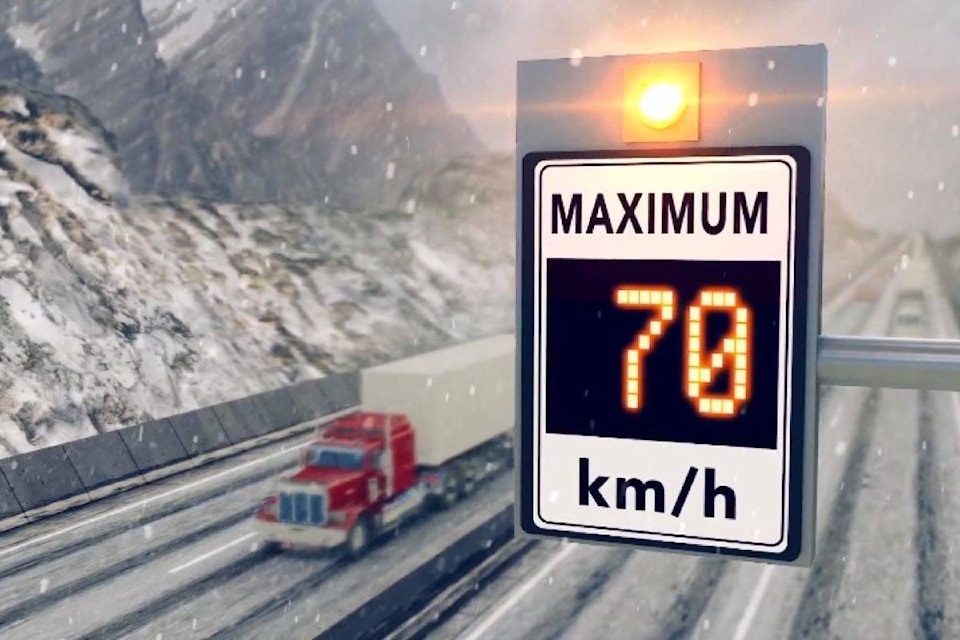Following an intense winter, the Ministry of Transportation and Infrastructure is undertaking several improvements to make British Columbia highways safer and more reliable during winter months.
In future, winter tire and chain regulations will be extended on select highways, including mountain passes and rural routes in high snowfall areas, to account for early-spring snowfall.
The current regulations require drivers to equip their vehicles with winter tires on most B.C. highways, and all commercial vehicle operators to carry chains, from October 1 to March 31. Motorists must have either M + S (mud and snow) or mountain/snowflake tires with a minimum tread depth of 3.5 millimetres, and commercial drivers must use chains when mandatory chain-ups are in place, or conditions warrant their use.
The ministry will expand the date range through to April 30 on select highways and mountain passes, to account for potential early spring snowfall events which occur regularly in the Southern Interior and Northern regions of the province.
Stricter commercial vehicle chain-up requirements, including higher fines for commercial vehicles not carrying chains, or not chaining up when required, will be implemented. Currently, the fine is $121. Other North American jurisdictions have fines up to $1,200 for similar violations, but the exact fine amounts are yet to be determined.
There will also be the introduction of a pilot program to restrict commercial vehicles from using the far left lane on key three-lane highway sections in the winter, to ensure routes remain open to snow plows, emergency vehicles, and passenger vehicles. During winter months, limiting the lanes on certain corridors that commercial vehicles can use will reduce the risk of collisions with passenger vehicles, and highway blockages due to spun-out trucks.
There will also be enhanced road-maintenance contractor monitoring and auditing, leveraging new tools and technology, like road weather stations, variable speed limit systems, and GPS tracking of snow plows.
An investment of $1.8 million over the next three years will be made in additional weather stations and overhead message signs, which will provide better real-time weather and road condition information for all drivers.
While B.C. has some of the highest standards for highway maintenance in the world, the Province wants to ensure that maintenance contractors are meeting those standards. Ministry staff will expand contractor monitoring and auditing, including 24/7 compliance checks during winter storms. New tools and technology will enhance this oversight, including the use of GPS tracking of snow plows.
B.C.’s highway maintenance program is broken down into 28 service areas, with 26 of these service areas up for contract renewal in 2018-19. The new contract will require a more proactive approach to highway maintenance around winter weather events.
Among the biggest improvements over the last contract are a return, on Class A highways, to bare pavement within 24 hours of a winter weather event ending (the old standard was 48 hours) at temperatures warmer than -9 C, when de-icing chemical use is effective; an increase in patrol frequency to 90 minutes on a Class A highway like the Coquihalla during a winter storm (old standard was four hours); an increase in patrol frequency, when a weather event is forecasted to occur, to four hours in anticipation of the weather event coming (old standard was 24 hours); and a 9.5 millimetre abrasive size (old standard was 12.5 millimetres) to reduce potential windshield damage.
This past winter the Coquihalla summit had a total snowfall of 830 centimetres from October 1, 2017 to the end of February 2018: 114 per cent higher than the 10-year average.
The Coquihalla has an average of 21 full closures per winter. Through January 2018, there were 35 closures, 31 of them involving commercial vehicles.
“I have heard from people and communities throughout the province that we need to take action to improve safety on our highways,” says Claire Trevena, Minister of Transportation and Infrastructure. “With that in mind, our government is moving quickly to implement changes that will ensure people are able to get where they need to go more safely through the winter months.”
editorial@accjournal.ca
Like us on Facebook and follow us on Twitter
